Tsunamis are among the most powerful and devastating natural disasters on Earth. These gigantic waves, which are frequently caused by underwater earthquakes, volcanic eruptions, or landslides, can travel across oceans and wreak havoc throughout coastal regions. Understanding tsunami formation and response is critical to public safety and catastrophe preparedness.
What is a tsunami?

A tsunami is a series of powerful ocean waves generated by the sudden displacement of a significant volume of water, typically as a result of seismic activity. Unlike typical sea waves, which are caused by wind, tsunamis are usually the result of geological events beneath the ocean’s surface.
Causes of Tsunamis
1. Underwater Earthquakes
Most tsunamis are caused by large undersea earthquakes at tectonic plate boundaries. When the sea floor abruptly deforms, it displaces the overlying water, sending waves outward in all directions.
2. Volcanic Eruptions
Volcanic explosions or the collapse of volcanic islands can push massive amounts of water, generating tsunami waves.
3. Landslides
Large landslides, especially those that occur near or into water bodies, can displace water and initiate a tsunami.
4. Meteorite Impacts
Though rare, a large meteorite hitting the ocean can create tsunami-like waves.
How do tsunamis travel?
Once triggered, tsunami waves can reach speeds of up to 800 km/h (500 mph) in deep water, which is nearly as fast as a commercial aircraft. As they approach shallower coastal locations, their pace slows but their height rises considerably, frequently becoming a wall of water.
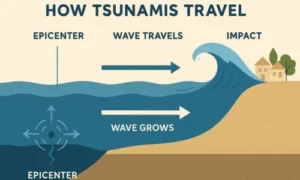
Effects of Tsunamis
Tsunamis can have devastating consequences, including:
- Loss of life and injuries
- Destruction of homes, infrastructure, and crops
- Saltwater contamination of freshwater supplies
- Disruption of local economies and tourism
- Long-term psychological and environmental impact
One of the deadliest tsunamis in recent history occurred on December 26, 2004, in the Indian Ocean, claiming over 230,000 lives across 14 countries.
Tsunami Warning Systems
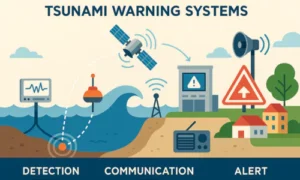
Many countries have developed early warning systems to detect seismic activity and issue tsunami alerts. These systems use seismic sensors, ocean buoys, and satellite communication to detect potential tsunamis and warn coastal populations in time.
Examples of warning systems:
- Pacific Tsunami Warning Centre (PTWC)
- Indian Ocean Tsunami Warning System (IOTWS)
Safety Tips: What to Do Before, During, and After a Tsunami
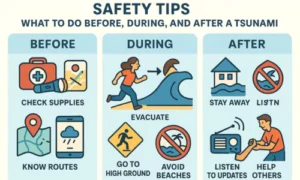
Before a Tsunami
- Know if you live in a tsunami-prone area.
- Familiarise yourself with evacuation routes.
- Prepare an emergency kit with essentials.
During a Tsunami
- Move immediately to higher ground or inland if you feel an earthquake or receive a tsunami warning.
- Stay away from the beach and do not go to watch the waves.
- Follow the advice of local authorities.
After a Tsunami
- Stay away until the area is declared safe.
- Be cautious of aftershocks and secondary waves.
- Avoid floodwaters and report gas leaks or damage.
Interesting Facts About Tsunamis
- The word “tsunami” comes from Japanese, meaning “harbour wave.”
- Tsunamis are not tidal waves; tides are caused by the moon and sun, not geological activity.
- A tsunami can consist of a single wave or multiple waves over several hours.
Conclusion
Tsunamis are a terrible and fascinating natural occurrence. While they cannot be avoided, understanding their causes, detecting warning signals, and knowing what to do can help save lives. Education and readiness are critical to reducing the impact of these devastating waves.


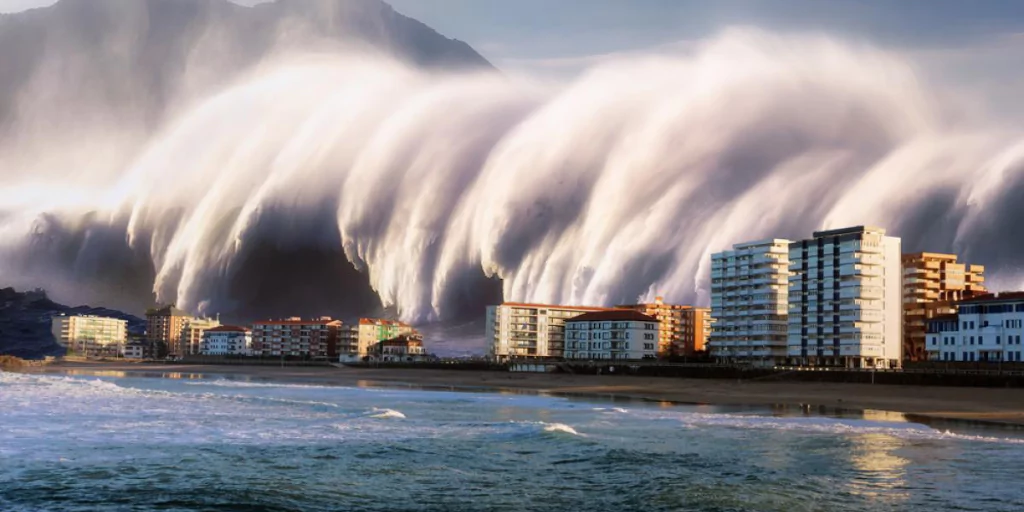
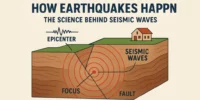
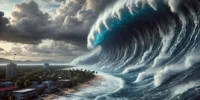


Johnniediall
August 11, 2025Дивитись подробиці: https://dailymail.com.ua/navchannia.html
JeffreyorEvy
August 11, 2025Импорт стал прозрачным и предсказуемым, благодаря чёткой работе специалистов https://vsoprovozhdenie1.ru/
kra44-cc
August 11, 2025Официальный сайт Kraken kra44 at безопасная платформа для анонимных операций в darknet. Полный доступ к рынку через актуальные зеркала и onion ссылки.
JasonPef
August 11, 2025Надёжно переведём документы – нотариальный перевод документов бюро переводов. Срочный перевод документов в Самаре? Выполним быстро! Нотариальное заверение. Гарантия качества. Конфиденциально.
Josephpep
August 11, 2025дизайн интерьера онлайн студия дизайн интерьера петербург
Jamesjes
August 11, 2025Only top materials: https://independent.academia.edu/npprteam